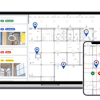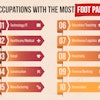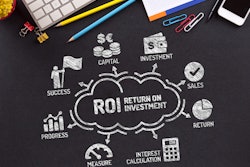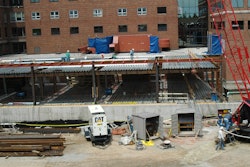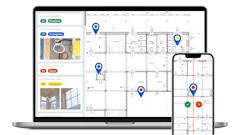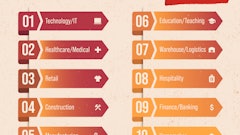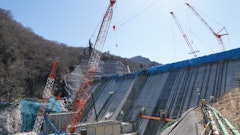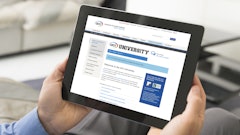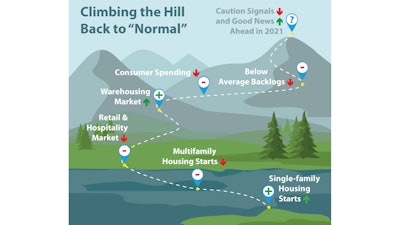
Now that 2020 is behind us, most business owners get to close the books for the 12 months ending December 31st. Obviously, those with fiscal year ends have additional months to work through, but I would guess the results will be much like those with December 2020 year ends.
From what I read and hear, some contractors had a good year doing remodeling or restoration work, depending on the segment they serviced. With single-family housing starts expected to increase in 2021, there is probably more work to come that way.
Multifamily starts, however, look to be weak as segments of the population move out and away from cities into the burbs, where there is more space along with a safer environment. Obviously, the ability to work from home caused by the pandemic also encouraged movement into single-family homes.
It’s no secret the retail and hospitality markets absorbed the bulk of the downturn in construction starts, with the same expected for 2021, except for the retail required for new housing locations. Warehousing, on the other hand, had a good year in 2020 because of the swing into e-commerce programs and the need to service the population that pushed out city boundaries.
Other Caution Signals Ahead
No matter what you expect in 2021, there are hills to climb before we get back to “normal.” The country is still in a major recession. The economy is not well. Consumer spending continues to be down (no surprise). And it’s anybody’s guess how the vaccine will be received.
In other words, this is not your typical economic cycle where we have both growth and recessions with history on how to deal with either. Consider that 70% of construction spending each year results from jobs awarded in prior years. With current backlogs below average, it is very possible that construction activity will be slow through most of 2021, even if the Biden Administration passes a major infrastructure bill.
Use a Cautious Approach to Construction Equipment Acquisition in 2021
I don’t believe any of this is a big secret because contractors should have a good feel for the market needs for the type of work they perform. Even if that is the case, management needs to plan for and make decisions regarding 2021. No matter who you are, there are issues to consider that are new to the equation, which is why I suggest that more caution than normal should be part of the decision-making process.
As if the issues noted above aren’t enough to drive you nuts, I came across another after reviewing the stock market. It’s hard to believe the current market pricing (as of mid-January), which can only lead to you-know-what sooner rather than later. After diving into the S&P valuation factors, I see no relationship to the S&P values compared to the real world. For example:
- Median Price to Sales — 2.8
- Median Price to Book — 3.9
- Median EV to EBITDA — 15
- Average Price to Earnings — 25
Another source covers PE ratios (the price to earnings ratio of the constituents of the S&P 500) for the period 1945-2025. It calculates the average PE ratio over this period to be 17, but we are pushing 31, which is higher than all past bull market peaks during this period. In other words, here is another issue to consider that could knock you out of the box no matter how well you did in 2020 and how well you plan out 2021. Regardless how you look at it, 2021 is not going to be easy to deal with.
Good News in Round 2 of PPP Loans
On the bright side, there is a new Paycheck Protection Program loan option (PPP2) now available. I read about it in late December and liked what I saw. It will be available for qualified companies, but those who received loans under the first round of the program (PPP1) are not guaranteed to receive a loan during the second round.
To obtain funds from PPP1, you filled out the application using 2019 payroll data and, in most cases, received funds that could be forgiven if they were used as required by the program. As we have discussed previously, this forgiven amount was to be tax free, but somehow became taxable in the year the PPP1 funds were spent. Now, there may be a change to make PPP1 forgiveness non-taxable; however, that was still in limbo at the time this was written. Keep checking with your tax folks regarding this issue.
PPP2, on the other hand, will be tax free. To qualify for the program, the taxpayer must compare total revenues for each quarter in 2019 against revenues in each quarter of 2020. If you have at least one quarter where the 2020 revenues are 25% less than that same quarter in 2019, you qualify.
Notice the difference between the two programs? For PPP2, you need to prove you need it, which was basically not the case with PPP1. But what makes the application for PPP2 easier is the fact that it still uses the 2019 payroll for the loan calculation to cover a similar period used with PPP1 — 2.5 months or eight weeks. In other words, the calculation you prepared for PPP1 may be the same for PPP2.
There may be one other program available where the Small Business Administration (SBA) will allow you to not pay SBA mortgage payments for a two- to three-month period. Again, this was not written in stone at the time of writing.
I bring up PPP2 because if you qualify, it will lessen your “caution” burden and supply a cushion should you need it.

